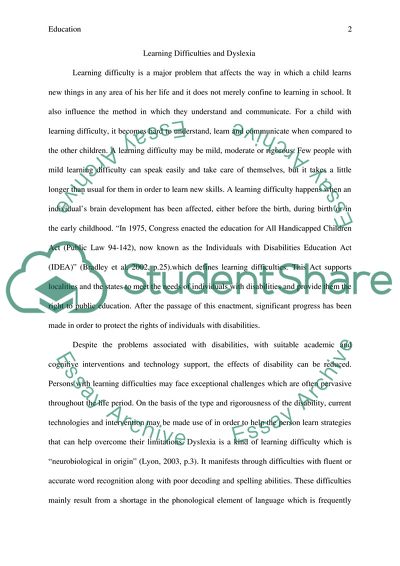Cite this document
(Learning Difficulties and Dyslexia Essay Example | Topics and Well Written Essays - 1750 words, n.d.)
Learning Difficulties and Dyslexia Essay Example | Topics and Well Written Essays - 1750 words. https://studentshare.org/education/1797104-what-is-learning-difficulties-and-what-is-dyslexia
Learning Difficulties and Dyslexia Essay Example | Topics and Well Written Essays - 1750 words. https://studentshare.org/education/1797104-what-is-learning-difficulties-and-what-is-dyslexia
(Learning Difficulties and Dyslexia Essay Example | Topics and Well Written Essays - 1750 Words)
Learning Difficulties and Dyslexia Essay Example | Topics and Well Written Essays - 1750 Words. https://studentshare.org/education/1797104-what-is-learning-difficulties-and-what-is-dyslexia.
Learning Difficulties and Dyslexia Essay Example | Topics and Well Written Essays - 1750 Words. https://studentshare.org/education/1797104-what-is-learning-difficulties-and-what-is-dyslexia.
“Learning Difficulties and Dyslexia Essay Example | Topics and Well Written Essays - 1750 Words”. https://studentshare.org/education/1797104-what-is-learning-difficulties-and-what-is-dyslexia.


